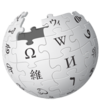Henry Street
 | |
| Suburbs: | |
|---|---|
| Named after: | John Henry |
| Connects with: | |
| Wikidata: | Q16342680 |
| OpenStreetMap: | 8406929 |
-32.055330555556, 115.74418333333 | |
Wikipedia has an article about Henry Street, Fremantle.
You may wish to contribute to that article in preference to this one, so that your contributions may be of use to the greatest number of people.
Of course, anything that is not suitable for Wikipedia can be added here on Freopedia instead (within reason).




